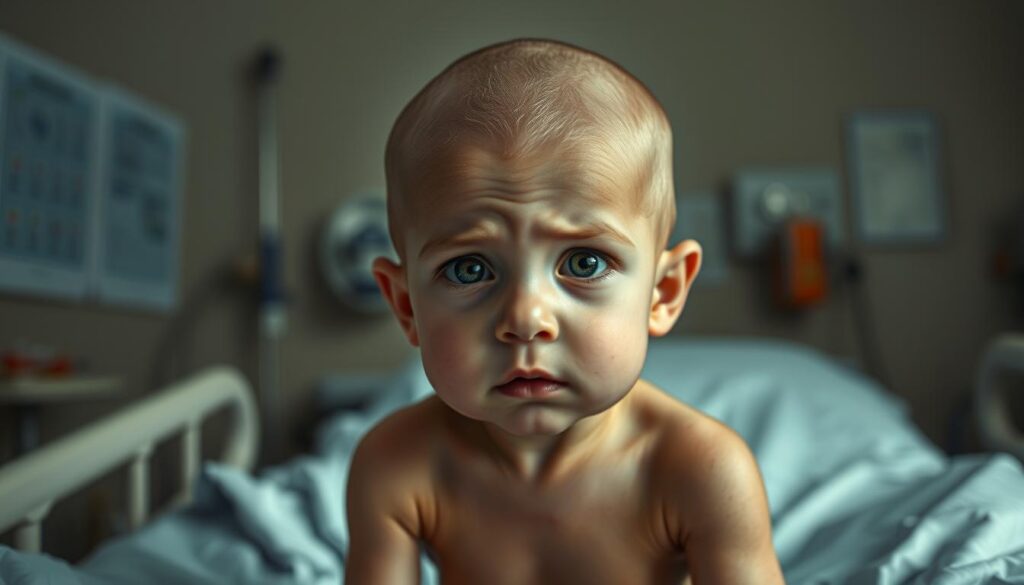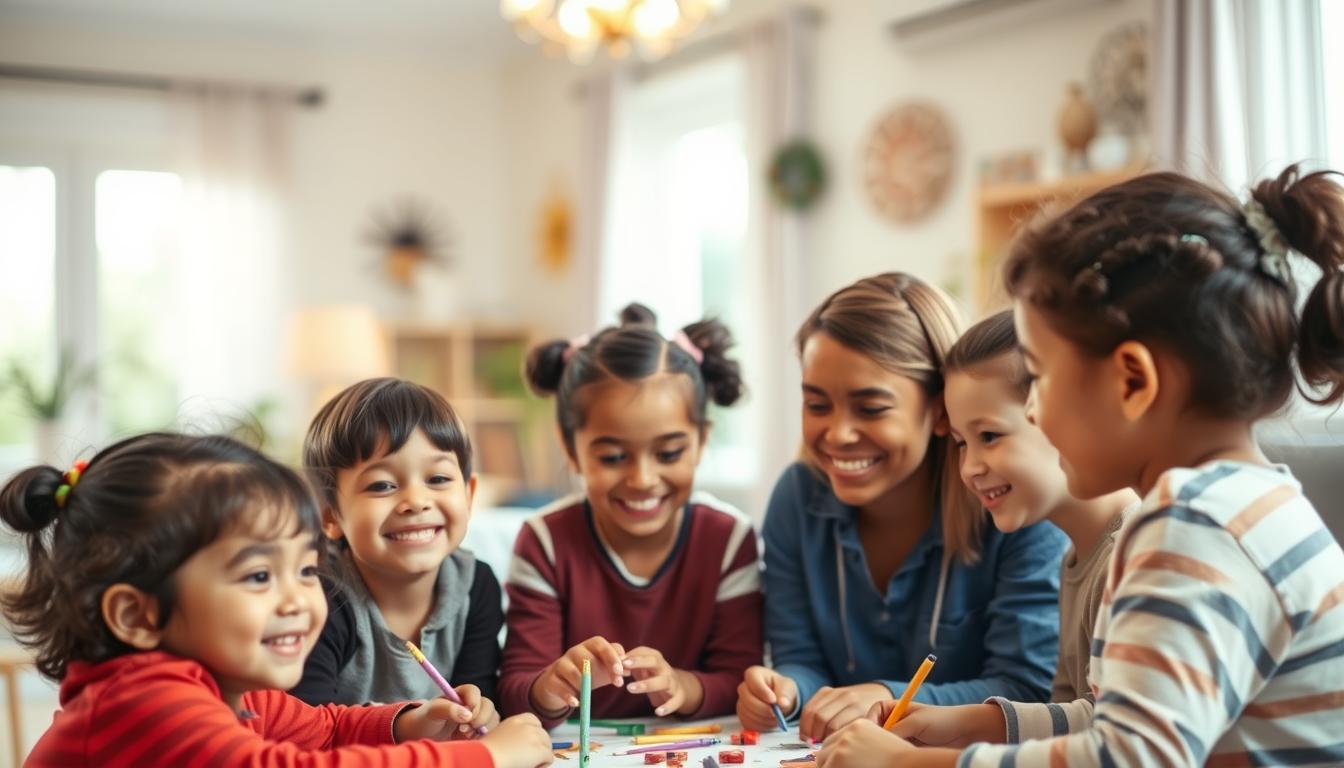Dealing with pediatric cancer is tough for families and kids. The fight against cancer in children needs a caring network of healthcare, emotional support, and practical help. Many cancer care services are designed to make this journey easier. They offer a safe space for kids and their families to find comfort and courage.
In the U.S., there’s a growing effort to improve life for kids with cancer. Families facing this challenge can find many resources. These include financial help and educational support, aiming to keep a child’s growth and family life as normal as possible.
Key Takeaways
- Identifying valuable childhood cancer resources is key to providing support.
- Comprehensive cancer care for kids can greatly improve their experience.
- Strong support networks are vital in managing the daily challenges of cancer.
- Financial and educational aid help keep life somewhat normal.
- Emotional support is just as important as medical care in fighting pediatric cancer.
Understanding the Journey of a Cancer Child

The path through a cancer diagnosis in children is tough. But, knowing what to expect can help both the child and their loved ones.
Coping with childhood cancer starts with getting the emotional shock of the diagnosis. At first, people feel shocked and in denial. Then, as they learn about pediatric oncology treatments, they start to accept their situation.
The Initial Diagnosis: Shock and Acceptance
Getting the news of a cancer diagnosis in children can be overwhelming. At first, people can’t believe it. But, they soon start to accept it, which is key for moving forward with treatment.
Medical Treatment Options: What to Expect
Pediatric oncology treatments have improved a lot. Now, there are more precise and gentle treatments like targeted therapies and small surgeries. These new methods help fight cancer with fewer side effects.
The Role of Mental Health in Cancer Care
Keeping a positive mental state is vital during this tough time. It’s important to have mental health support for cancer patients. This support helps with coping and emotional relief, making it easier to get through the long treatment times.
In summary, dealing with childhood cancer is a complex process. It involves many layers of care. By understanding each step and support, families and medical teams can work together. This helps the young patient on their way to recovery.
Building a Support Network for Children with Cancer
For kids with cancer, having a strong support network is key. It gives them emotional comfort and practical help during treatment. We’ll look at how to build this network, focusing on cancer support groups, family involvement in cancer care, and the role of pediatric oncology social work.
Finding Local and Online Support Groups
Cancer support groups, both local and online, are a treasure trove of resources. They offer a place to share experiences and strategies for coping. This helps kids and their families feel less alone and more supported.
Engaging Family and Friends in the Care Process
Family involvement in cancer care is a game-changer. When family and friends are involved, it lightens the emotional load on the child. It creates a supportive environment that helps with healing and staying strong.
Professional Support: Counselors and Social Workers
Experts in pediatric oncology social work are vital to the care team. They help with the healthcare system and provide emotional support tailored to each child. Their skills in addressing emotional and practical needs improve treatment outcomes.
Creating a diverse support network is essential for kids with cancer. It ensures they get medical, emotional, and social support. This approach helps build a strong childhood cancer community where every child gets the care they need to fight cancer.
Tailoring Education and Social Life
Children with cancer need to keep up with school and friends. This part talks about how to keep their education and social life going. It covers cancer and education and social inclusion for cancer patients.
Maintaining Education During Treatment
It’s key to keep a sick child’s education going. Schools are now making special plans for them. These plans include:
- Flexible schedules for medical visits and rest.
- Learning from home or the hospital for those who can’t be in class.
- Learning plans made with doctors to help the child learn best.
These changes help make sure kids with cancer can keep learning.
Adapting Social Activities for Improved Inclusion
Changing social activities is also important. Schools and community centers are getting better at this. They make sure everyone can join in, even kids with cancer. They do things like:
- Make physical activities easier.
- Let kids join in from home or the hospital.
- Teach others to be kind and understanding.
These changes help kids with cancer stay connected with friends. It’s good for their mind and heart.
Financial and Legal Resources for Families
Managing the financial and legal sides of caring for a child with cancer is key. This part looks at health insurance for cancer, ways to fundraise, and the legal rights of cancer patients. It aims to help families tackle these tough challenges.
Navigating Insurance for Child Cancer Patients
Finding the right health insurance for cancer can be tough. It’s important to know what’s covered, like treatments and meds. Some plans need approval for certain treatments or meds, so talking to doctors early is a must.
Fundraising and Financial Assistance Programs
- Online fundraising sites are a big help in getting financial aid for cancer families.
- Local charities and assistance programs for childhood cancer give grants for medical and living costs.
Understanding Your Legal Rights and Support
The legal rights of cancer patients include protections under the ADA and FMLA. These laws help parents balance work and care without job loss worries. Knowing these rights helps families fight for their child’s needs.
| Resource Type | Description | Benefits |
|---|---|---|
| State Health Insurance | Programs designed to provide health coverage for children facing cancer. | Covers a broad range of cancer treatment and medication |
| Non-Profit Organizations | Organizations providing financial and logistical support to affected families. | Access to special grants and day-to-day living assistance |
| Legal Advocacy Groups | Groups that provide information and assistance in navigating patient rights. | Guidance on employment rights, educational accommodations, and healthcare access |
Conclusion
The cancer child journey is filled with challenges and victories. We’ve looked at the support needed for kids with cancer and their families. Pediatric patient advocacy is key, making sure kids get the right care.
Family support is vital, providing comfort and stability. Education, social life, and financial help are also important. These steps help kids and families overcome cancer’s obstacles.
Healthcare providers, educators, and the community play a big role. They create a supportive environment where growth and hope thrive. This approach helps kids survive cancer and stay well for life.
Our story highlights the importance of support and the courage of kids and families. The fight against cancer doesn’t end with remission. It’s a continuous effort to protect their progress.
We promise to support these strong individuals. Our goal is to ensure every child with cancer can become a survivor. This hope is essential for families facing this journey in the United States.




